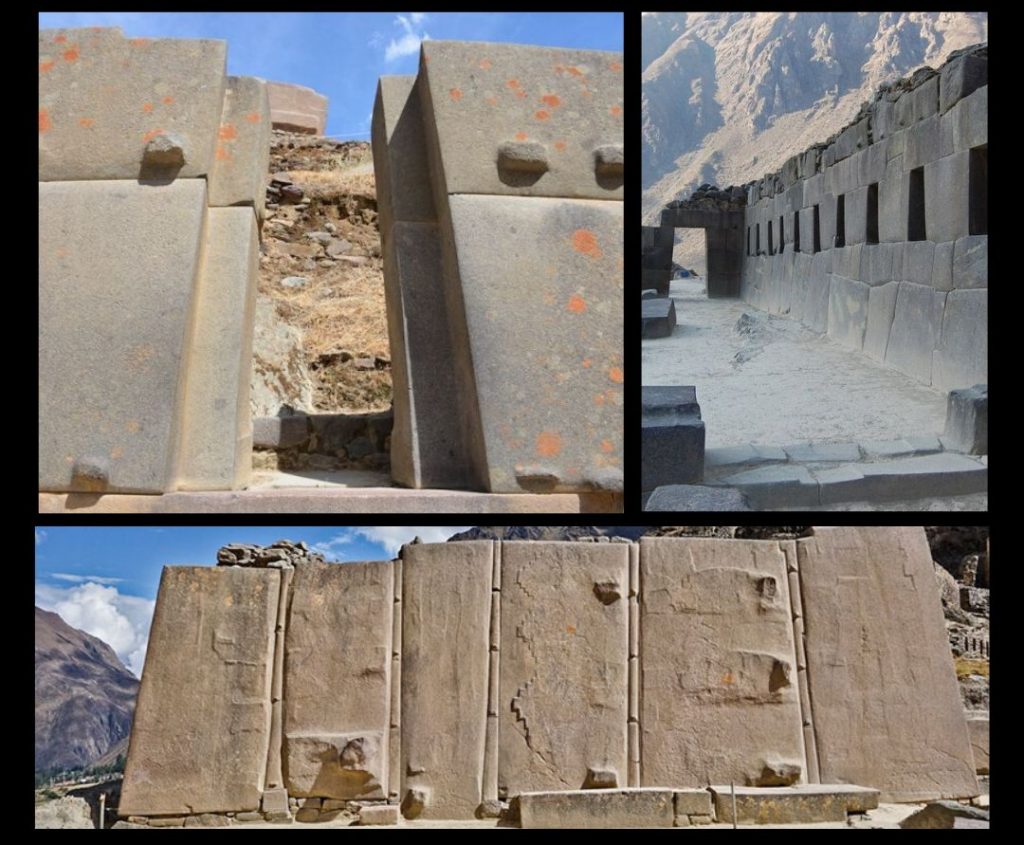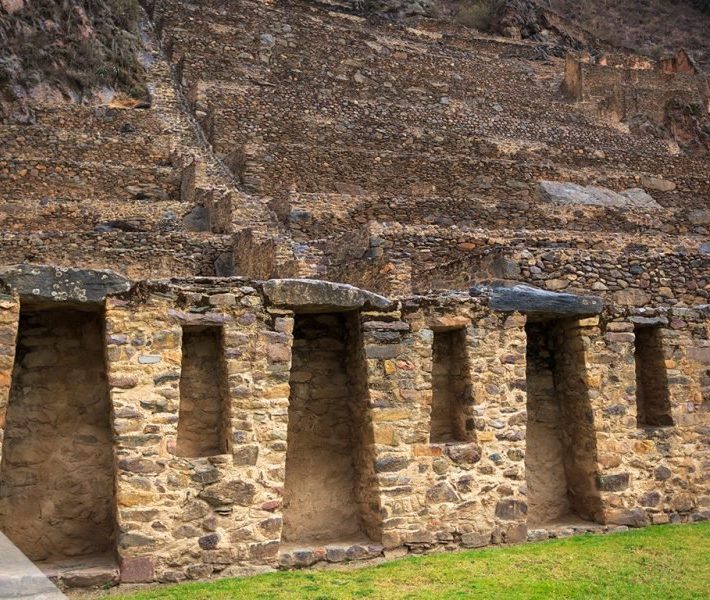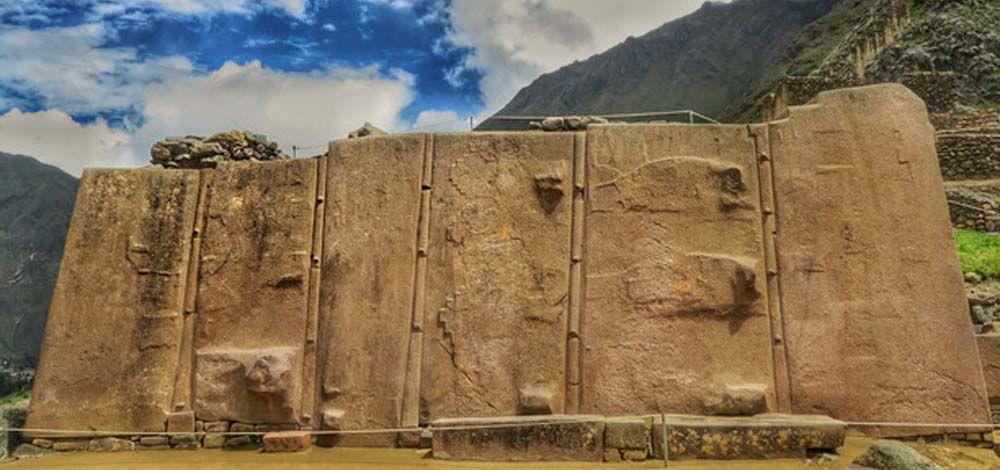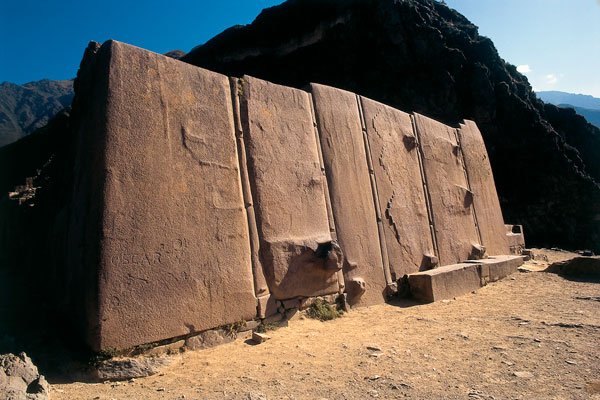Ollantaytambo's Incredible Megalithic Structures
Ollantaytambo’s incredible megalithic structures include a megalithic fortress, countless perfectly cut andesite slabs scattered all over the area, polygonal walls, and a temple, all of which stand as the evidence of an architectural style deeply different from the Inca one.
Ollantaytambo is a small town in Peru located 75 km northeast of Cusco, and its name means “inn of Ollantay” (the name of a warrior).
It was one of the cities where the Inca and the Spaniards fought when Manco Inca tried to rally the Inca resistance after the defeat of Cusco.
During the Inca Empire, it was home to the emperor Pachacuti. 
Going up the stairs that climb up the terraces dating back to the Inca period, you get to the heart of the megalithic temple, of which only a few perimeter stones remain.
Once you reach the top of the site you can appreciate a particular construction on the mountainside.
Megalithic blocks are cut with precision, squared, polished, and placed together without mortar so that a sheet of paper doesn’t fit between the joints of these incredibly engineered polygonal walls.

Comparing Ollantaytambo’s incredible megalithic structures with the Inca ones, it’s clear how the Inca tried to emulate the constructive style of the pre-existing buildings as it happened at Macchu Picchu and Sacsayhuaman.
Evidently, they also made renovations and re-constructions upon the ancient structures, with clear different outcomes.
As a matter of fact, the newer walls completely lack the sophisticated style and architecture of the oldest structures that can be seen throughout the area.



The difference between both the materials used and the constructive style leaves little to no doubts.

The Temple of The Sun

Also known as Temple Hill, due to the impressive character of these terraces, this area is commonly known as the Fortress, but this is a misnomer, as the main functions of this site were religious, and the deity worshipped was Viracocha, Inca’s creator god.
The megalithic wall of the Temple consists of 6 incredibly huge stones with vertical joints that are “glued” together in the typical mortarless technique.

The blocks present the feature of the “knobs”, a characteristic also found in many megalithic buildings throughout the Mediterranean area, Egypt, India, Japan, and the Middle East.
On the 4th block from the left, we can also notice how the builders have tried to impress the “steps” motif (indicating the stairway to the heavens of Viracocha) by carving it directly on the block.
Last but not least, these blocks were transported from the other side of the mountain where the temple is located. This means that, if the Inca built this structure, since that they didn’t even know the use of the wheel, they had to drag each stone through a mountain, hills, swamps, a vast plateau, and then again back up to the top of the mountain where it still stands.
Since the actual masonry of the Inca is partly shown in the picture below, and they used smaller blocks, all the effort to transport the megalithic blocks would’ve made no sense, as they could’ve built the whole structure by using the small blocks, like in many other Inca buildings.

